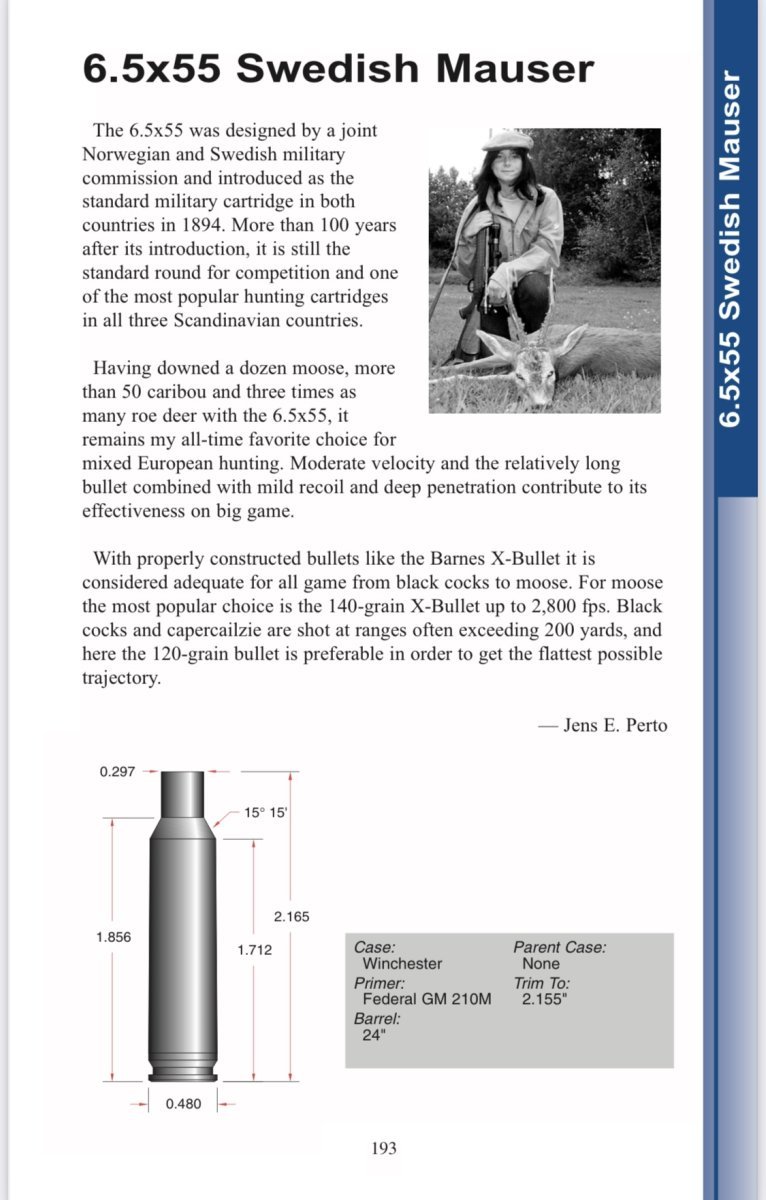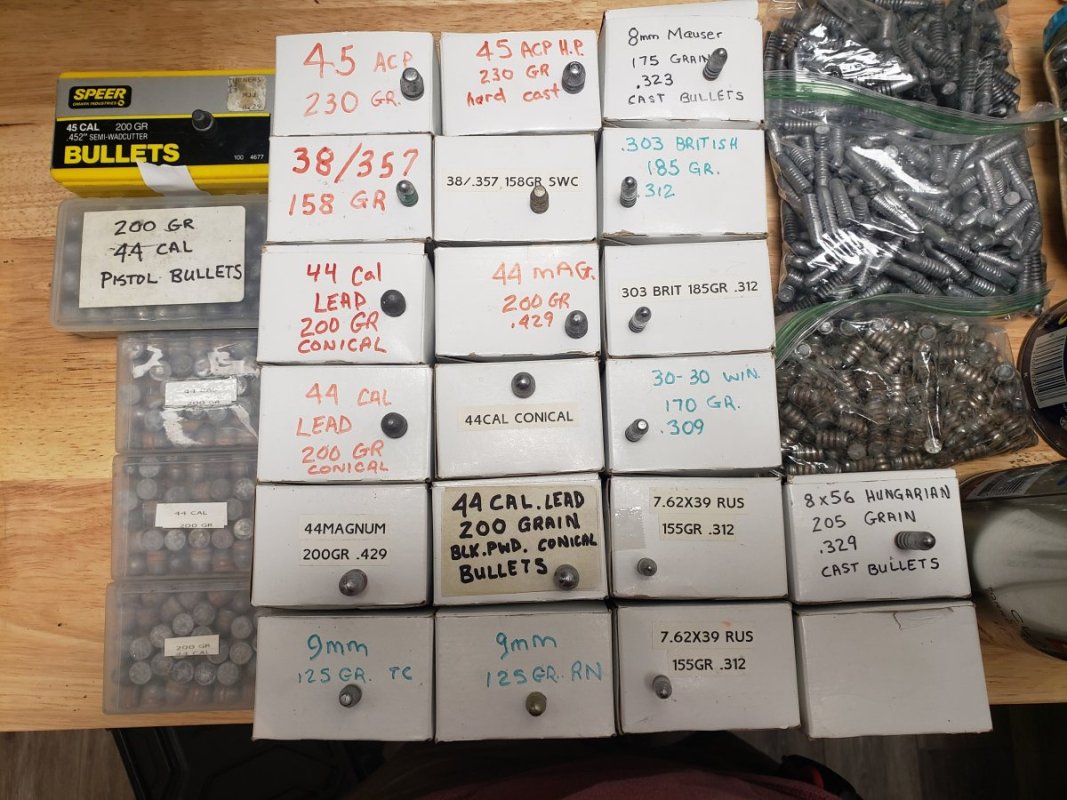I recently purchased a new Tikka T3x in 6.5 Swede and plan on getting everything I can out of the cartridge. As anyone who's familiar with 6.5 Swede knows, there are really two different types of 6.5 Swede load data. The first, and more prevalent, is load data for older Mauser rifles chambered in 6.5 Swede. These loads are pretty anemic compared to the second load. The second type is for modern rifles like my Tikka T3x in 6.5 Swede, which outperforms 6.5 Creedmoor in some cases. In this thread, I'm only discussing modern load data - so don't use any of this load data for your Mauser rifles.
Relevant components are Lapua brass, 6.5 127 gr Barnes LRX bullets, LR primers, and H4350. The load data I'm using is from an older Barnes manual that a Barnes rep was nice enough to photocopy and email to me - this data is not in the current Barnes manual so any cross-referencing you might do in the current Barnes manual will be showing Mauser data as Barnes does not currently produce modern 6.5 Swede data.
I plan on taking this slow, but not inefficiently. I plan on starting at the min powder point (42.0 of H4350 and going in half-grain increments until either at 45.0 - a grain below max charge - or pressure signs dictate otherwise). I plan on stopping a grain short of max charge as I've heard within the industry that powder manufacturers get their powders to be more efficient over time - and I would suspect that 45.0 grains of H4350 from 30 years ago is not as powerful as 45.0 grains of H4350 produced today). That's a personal preference on my part, do whatever you want.
As a brief logistical note, I live 45 minutes from my rifle range - where I cannot set up my reloading gear. I go to the range every couple weeks, so I don't mind breaking this up into a few trips but I'd like to minimize the time it takes to do this. Note that, from 42.0 to 45.0 with half-grain increments, I've got 8 potential loadings with expensive bullets and even more expensive brass. Normally, I'd do ten rounds per loading but that's $200 in just load development. I want to test (1) for pressure signs and (2) for accuracy, with velocity being a non-factor as I won't chrono anything until I know what load is most accurate.
To the meat of the question here, how many bullets per loading would you feel comfortable doing in my situation?
I've considered doing like 2 rounds per loading just to pressure test, then testing for accuracy in case I run into pressure early - but I'm well within book data here so that's more or less giving me an insurance policy that I can truly start load development at higher than min velocities. I'm open to ideas far and wide here.
Relevant components are Lapua brass, 6.5 127 gr Barnes LRX bullets, LR primers, and H4350. The load data I'm using is from an older Barnes manual that a Barnes rep was nice enough to photocopy and email to me - this data is not in the current Barnes manual so any cross-referencing you might do in the current Barnes manual will be showing Mauser data as Barnes does not currently produce modern 6.5 Swede data.
I plan on taking this slow, but not inefficiently. I plan on starting at the min powder point (42.0 of H4350 and going in half-grain increments until either at 45.0 - a grain below max charge - or pressure signs dictate otherwise). I plan on stopping a grain short of max charge as I've heard within the industry that powder manufacturers get their powders to be more efficient over time - and I would suspect that 45.0 grains of H4350 from 30 years ago is not as powerful as 45.0 grains of H4350 produced today). That's a personal preference on my part, do whatever you want.
As a brief logistical note, I live 45 minutes from my rifle range - where I cannot set up my reloading gear. I go to the range every couple weeks, so I don't mind breaking this up into a few trips but I'd like to minimize the time it takes to do this. Note that, from 42.0 to 45.0 with half-grain increments, I've got 8 potential loadings with expensive bullets and even more expensive brass. Normally, I'd do ten rounds per loading but that's $200 in just load development. I want to test (1) for pressure signs and (2) for accuracy, with velocity being a non-factor as I won't chrono anything until I know what load is most accurate.
To the meat of the question here, how many bullets per loading would you feel comfortable doing in my situation?
I've considered doing like 2 rounds per loading just to pressure test, then testing for accuracy in case I run into pressure early - but I'm well within book data here so that's more or less giving me an insurance policy that I can truly start load development at higher than min velocities. I'm open to ideas far and wide here.









